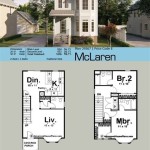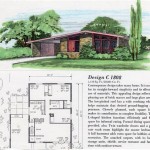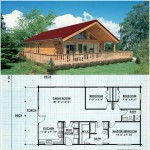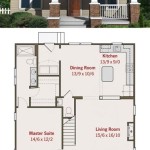How To Add Dimensions to a Floor Plan in Revit 2024
Dimensioning is a crucial aspect of creating accurate and communicative floor plans in Revit. Adding dimensions allows contractors, engineers, and other stakeholders to understand the precise measurements of the designed space, ensuring proper construction and adherence to design specifications. Revit 2024 offers a variety of dimensioning tools catering to different needs and complexities of a project. This article will guide users through the process of adding dimensions to a floor plan in Revit 2024, covering common techniques and best practices.
Before starting the dimensioning process, it is important to ensure the project's units are set correctly. This guarantees that the displayed dimensions are in the desired units (e.g., feet and inches, meters, millimeters). To adjust project units, navigate to the "Manage" tab on the Revit ribbon, then click on "Project Units". A dialog box will appear where you can modify the units for length, area, volume, angle, and other relevant parameters. Ensure the "Format" option is configured to accurately represent your desired unit display (e.g., rounding, decimal places, unit symbol).
Understanding Revit Dimensioning Tools
Revit provides several dimensioning tools, each suited for different types of measurement. Familiarizing yourself with these tools is essential to effectively dimension a floor plan.
Aligned Dimension: This is the most versatile dimensioning tool. It allows you to create dimensions parallel to a selected element or between two points. Users can click on individual walls, openings, or gridlines to establish the dimension line. Aligned dimensions are frequently used to show overall lengths, distances between walls, or the width of doors and windows.
Linear Dimension: This dimension tool is used to create horizontal or vertical dimensions between two points. Linear dimensions are useful for showing orthogonal distances, such as the spacing between columns or the height of a wall.
Angular Dimension: This tool measures the angle between two lines or planes. Angular dimensions are useful for documenting angled walls, roof pitches, or other non-orthogonal elements.
Radial Dimension: The Radial dimension tool is used to measure the radius of a circle or an arc. This is applicable for curved walls, columns, or other circular elements in the floor plan.
Diameter Dimension: This tool measures the diameter of a circle or an arc. It is very similar to the Radial dimension, but it displays the total diameter instead of the radius.
Arc Length Dimension: Specifies the distance along a curved line or arc that is selected.
Spot Elevation: Used to identify the elevation of a specific point relative to a defined origin point in the model.
Spot Coordinate: Displays the coordinate values (X, Y, Z) of a specific point in the model, relative to the project origin.
Spot Slope: This annotates the slope of a selected element. The slope can be calculated for surfaces, ramps, roofs, or any other element with an incline.
Step-by-Step Guide to Adding Dimensions
This section provides a detailed walkthrough of adding several types of dimensions to a floor plan.
1. Activating the Dimension Tool: To begin, navigate to the "Annotate" tab on the Revit ribbon. In the "Dimensions" panel, select the desired dimension tool based on the measurement you want to create (e.g., "Aligned," "Linear").
2. Selecting Reference Points: Once a dimension tool is selected, Revit prompts you to select the reference points or objects to be dimensioned. For example, when using the "Aligned" dimension tool, click on the face of the first wall, then click on the face of the second wall. Revit will automatically snap to the endpoints, centerlines, or wall faces depending on your settings. You can use the "Tab" key to cycle through available snap points if Revit isn't selecting the desired location.
3. Placing the Dimension Line: After selecting the reference points, move the cursor to position the dimension line. The dimension value will dynamically update as you move the cursor. Click to place the dimension line in the desired location on the floor plan. Ensure the dimension line is clear of other elements and does not obstruct readability.
4. Modifying Dimension Properties: After placing the dimension, you can modify its properties by selecting it. The Properties palette will display various parameters, including the dimension style, text size, witness line gaps, and more. A common modification is to change the "Dimension Style" to a predefined style that matches your project's standards. Dimension styles control the appearance of the dimension, including the text font, arrowheads, and line thickness.
5. Using "Equality" Constraints: Revit allows you to create equality constraints between dimensions. This is particularly useful when you want to ensure that multiple elements are equally spaced. To create an equality constraint, place dimensions between each element. Select all the dimensions and click the "EQ" symbol that appears. This will automatically adjust the element spacing to be equal, and the dimensions will display "EQ" instead of a numerical value. Locking the equality ensures consistency even as the design evolves.
6. Override Dimension Text: It is sometimes necessary to override the dimension text to convey additional information or to correct a dimension that Revit is calculating incorrectly. Select the dimension, then in the Properties palette, find the "Text" section. You can enter custom text in the "Override" field. You can also use the "Below" and "Above" fields to add text beneath or above the dimension value. Be cautious when overriding dimensions, as it can lead to inconsistencies in the model. Always document any overrides and ensure they are accurate and necessary.
7. Working with Witness Lines: Witness lines (also called extension lines) extend from the element being dimensioned to the dimension line. You can adjust the length of witness lines and control their appearance. Select the dimension and use the grips on the witness lines to drag them to the desired length. In the Properties palette, you can adjust the "Witness Line Gap to Element" parameter to control the distance between the witness line and the element being dimensioned.
Best Practices for Dimensioning in Revit
Adhering to best practices ensures that dimensions are clear, accurate, and easy to understand. Consistency in dimensioning style contributes to a professional and coherent set of drawings.
1. Establish a Dimensioning Strategy: Before starting the dimensioning process, develop a clear strategy. Determine which elements need to be dimensioned and the order in which you will add dimensions. Consider the level of detail required and the intended audience for the drawings. A well-defined strategy will save time and effort in the long run and minimize the risk of errors.
2. Use Dimension Styles: Revit Dimension Styles control the appearance of dimensions, including text size, font, arrowheads, and line thickness. Create and use predefined dimension styles to maintain consistency throughout the project. Modify the dimension styles as needed to meet specific project requirements or client preferences. Using Dimension Styles helps enforce readability and consistency across the drawing set.
3. Avoid Overlapping Dimensions: Ensure that dimensions do not overlap with each other or with other elements in the floor plan. Overlapping dimensions can be difficult to read and may lead to misinterpretations. Stagger dimensions and use appropriate witness line lengths to avoid clutter. Consider using different dimension styles for different levels of detail to further improve clarity.
4. Dimension to Significant References: Dimension to significant references, such as wall faces, centerlines, or gridlines. These references are typically more reliable and easier to locate on the construction site. Avoid dimensioning to obscure or temporary elements, as they may be removed or modified during the construction process.
5. Chain Dimensions Where Appropriate: Chain dimensions, also known as continuous dimensions, are a series of dimensions that are joined together. Chain dimensions provide a clear and concise way to show the overall length of a sequence of elements. Use chain dimensions when appropriate to reduce the number of individual dimensions and improve readability.
6. Utilize Temporary Dimensions: Revit automatically displays temporary dimensions as you create and modify elements. These temporary dimensions dynamically update as you move the cursor. Use temporary dimensions to quickly and easily adjust the size and position of elements as you are modeling. Temporary dimensions can be made permanent by clicking on the dimension value.
7. Verify Dimension Accuracy: Regularly verify the accuracy of your dimensions. Use the "Measure" tool to double-check the distances between elements. Pay close attention to angular dimensions, as small errors can propagate and lead to significant discrepancies. It is crucial to have accurate dimensioning since the data generated from these dimensions are what contractors would be working on to build the project.
8. Organize Dimensions on Separate Views: For complex projects, consider organizing dimensions on separate views. Create dedicated dimension views that only show dimensions and relevant building elements. This can improve clarity and reduce clutter on the main floor plan views. View templates can be used to quickly apply consistent settings to dimension views.
9. Use Tags Where Appropriate: In some cases, it may be more appropriate to use tags instead of dimensions. Tags can be used to label elements with specific information, such as the size, type, or material. Tags are particularly useful for annotating repetitive elements, such as doors and windows.
10. Consider Using Grids: Leveraging grids in your Revit project can greatly simplify the dimensioning process. Grids serve as reference points and can be easily dimensioned, providing a clear framework for understanding the spatial relationships within the design.

Help Part 11 Add Dimensions Autodesk

How To Draw A Floor Plan In Revit 2024

Dimension Site Plan In Revit Episode 2

Dimension Site Plan In Revit Episode 2

How To Add Dimensions In Revit Like A Pro Easy Quick Guide

Revit Tip Entire Wall Dimensioning Envisioncad
Revit 2024 Adding Dimensions Arkance Systems

How To Jazz Up Floor Plan Graphics In Revit Tutorial

Revit Dimensions On Plan

Revit Dimensions On Plan
Related Posts








